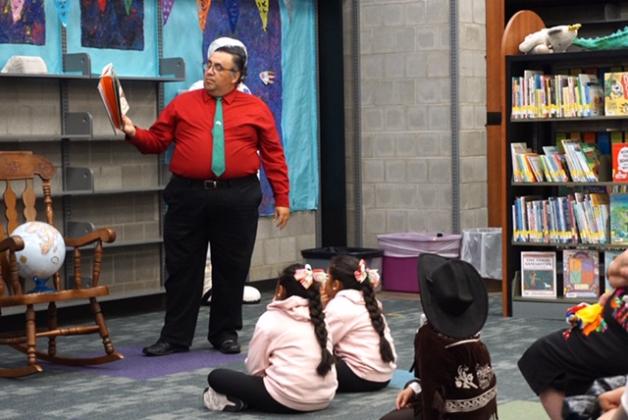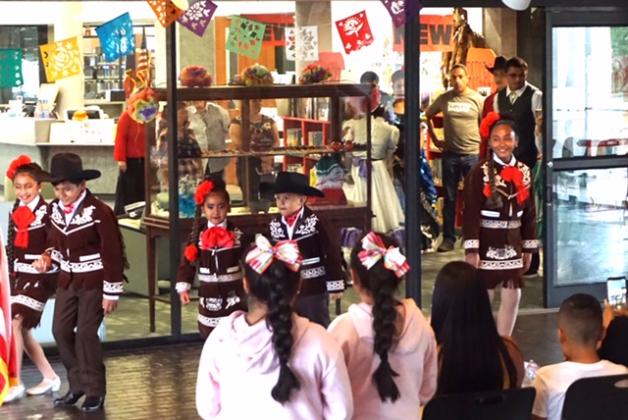Hispanic Heritage Month begins with Independence Days
Sunday, Sept. 15, marked the start of Hispanic Heritage Month, which runs from Sept. 15 through Oct. 15, which seems a rather strange time frame until I did some research and found out that, in addition to Sept. 16 being Mexican Independence Day, Sept. 15 is the anniversary of independence for Costa Rica, El Salvador, Guatemala, Honduras, and Nicaragua.
My interest in Mexican history is born of a natural curiosity, as I am a Texan of Mexican descent, with my mother having been born in San Felipe, Guanajuato, not far from the town of Dolores Hidalgo, the cradle of Mexican Independence, where the Catholic priest Miguel Hidalgo y Costilla, who felt that the time for independence had come, stirred the Mexican populace to arms on Sept. 16, 1810, with El Grito de Dolores, The Cry of Dolores, his verbal salvo which launched the struggle for independence.
The fight for independence continued for 11 years, but unfortunately Hidalgo did not live to see independence, as he, along with several other rebel leaders, were captured and executed in 1811, by Royalist forces.
The rebel leadership mantle was then taken up by Bernardo de Gutierrez de Lara, a blacksmith, who traveled to Washington DC, to try and drum up support from the United States, but was only given the assurance that the U.S. would not interfere, as it did not want to damage its relations with Spain.
Frustrated, Gutierrez began to consider a military filibuster, and so traveled to Louisiana, which had only been admitted into the Union that year, 1812, and there, he met with the governor, asking for military assistance. Gutierrez gained the support of Augustus Magee, and formed a force of 130 in early August and marched into what was then Spanish Texas, capturing the town of Nacogdoches. From there, emboldened by their success, they took the town of Santissima Trinidad de Salcedo, now known as Trinidad.
The Spanish governor, leading an army, was searching for the rebels, and found them near Goliad, where they had taken control of the fort at Presidio La Bahia.
Magee, who by this time was leading the rebels, was besieged for four months, and at one time even negotiated with the Spanish army and considered surrendering, but decided to continue to fight.
However Magee’s men had lost confidence in him and disillusionment spread amongst the rebel leaders. Ma-gee, however, died in February of 1813, following a long illness, and Samuel Kemper was chosen to lead the rebels.
Magee sent one of his men to recruit new volunteers, and he came back with men from Nacogdoches, some Spanish army defectors, and some Coushatta Indians, which enabled the rebels to beat back the governor’s army, on Feb. 19, which then retreated to San Antonio.
Magee and his rebel army, which had swelled to approximately 500 men, with more volunteers consisting of Americans, Tejanos, Spanish, and native Americans, pursued the royalist forces, and on March 29 1813, defeated the Spanish army at the Battle of Rosillo Creek, just outside present-day San Antonio, and the Spanish governor surrendered on April 1, 1813.
Gutierrez felt that the prisoners should be taken to the U.S. but instead, the Spanish leaders, Manuel Maria de Salcedo and Simon de Herrera, were marched out of town, tied to a tree and executed.
On April 17, 1813, the rebels, or Republican Army, as they were also known, drafted a Declaration of Independence of the state of Texas as part of the Mexican Republic, adopted a green flag as their banner, and Gutierrez proclaimed himself as the first president of Texas, although some accounts say he called himself the first Governor.
Next week, I’ll continue the story of the Gutierrez-Magee Expedition, and its ultimate influence on Texas.
SUPPORT your Liberty Panthers with a subscription to THE VINDICATOR. Buy a 1-year subscription from a Panther by Oct. 11 and half of the money goes to support the Panthers through the Liberty Athletic Booster Club.


